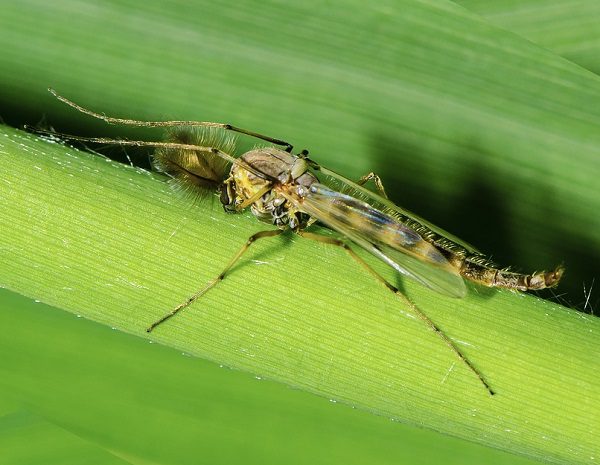MIDDLE RIVER, MD—County Executive Johnny Olszewski on Tuesday announced that the level of nuisance midges in upper Back River declined significantly last summer thanks to an aerial spraying effort conducted by Baltimore County Department of Environmental Protection and Sustainability (DEPS) with financial support from the Maryland Department of Agriculture (MDA).
“We are committed to ensuring those who visit, live and work along Baltimore County’s waterways are able to enjoy our amazing outdoor activities, and are encouraged by the positive results from midge treatments on Back River,” said County Executive Olszewski. “I am grateful for the state’s partnership on this quality-of-life and economic issue and look forward to continuing the program again this year.”
Baltimore County and the Maryland Department of Agriculture are splitting the $1.65 million annual cost with the goal of reducing the midge population to tolerable levels.
“The continuation of this program is great news for the residents of Baltimore County, specifically the Back River. The Maryland Department of Agriculture and Baltimore County’s partnership in addressing the midge problem that has plagued the region demonstrates a strong commitment to a county/state relationship,” said Maryland Department of Agriculture Acting Secretary Kevin Atticks.
In this second year of a two-year pilot program, DEPS will again deploy a contracted helicopter crew to treat the upper portion of Back River, applying Bti, a naturally occurring bacterial larvacide in liquid form. After a successful proof of concept treatment in the fall of 2021, DEPS began regular treatments in mid-April 2022 and continued them every three to ten weeks.
The timing of treatments were based on need, as indicated by DEPS’ weekly biological monitoring of the midge larvae abundance in the riverbed. The County’s contractor, Helicopter Applicators Inc., conducted five aerial applications last year from April 11 through September 28, to a 1,200-acre open water area of upper Back River from Walnut Point northwest to Powells Point and the I-695 crossing, including portions of Deep Creek, Duck Creek, Bread & Cheese Creek, and Muddy Gut.
“I’m very pleased that the treatments did what was promised,” said 7th District Councilman Todd Crandell. Our office received very few midge complaints from the community since the spraying began, and I believe it’s been a very good investment so far.”
Positive Results Enhance Waterfront Recreation and Businesses
The treatments were successful, consistently reducing the midge larvae to well below nuisance levels in the riverbed, which reduced the population of these non-biting flies along the Back River waterfront. Since DEPS’ monitoring began in November of 2021, County natural resource specialists have taken some 1,200 samples, including 42 in the treatment area, seven in Back River’s tidal creeks and seven in control locations outside of the treatment area.
In November 2021, prior to treatment, DEPS’ monitoring showed larval midge density at 1,300 per square meter – almost triple the 500 per square meter that is considered nuisance level. Weekly measurements since July measured consistently below 500 per square meter post-treatment, and sampling on November 18, 2022 showed a dramatically reduced midge larval density of 66 per square meter. DEPS staff is continuing monitoring once per month through the winter, as weather permits.
“It’s been over-the-top successful,” said Sam Weaver, owner of Weaver’s Marina in Middle River, who expressed his pleasure that he’s been able to open windows and doors at his marina without being swarmed by midges.
What is Bti and How Does it Safely Reduce Midges?
Midges are small non-biting aquatic flies that often swarm near water or marshy areas where they breed, creating a nuisance for homeowners, boaters, businesses and recreational activities. Bti is a naturally occurring bacteria that is found in soil, and is only harmful to certain organisms, specifically midge, black fly and mosquito larvae and a few other aquatic flies. It does not harm people, fish, crabs or other aquatic invertebrates. The County’s contractor follows all applicable regulations and industry best practices. More information about Bti is available on the Maryland Department of Agriculture website.
Photo via Pixabay

